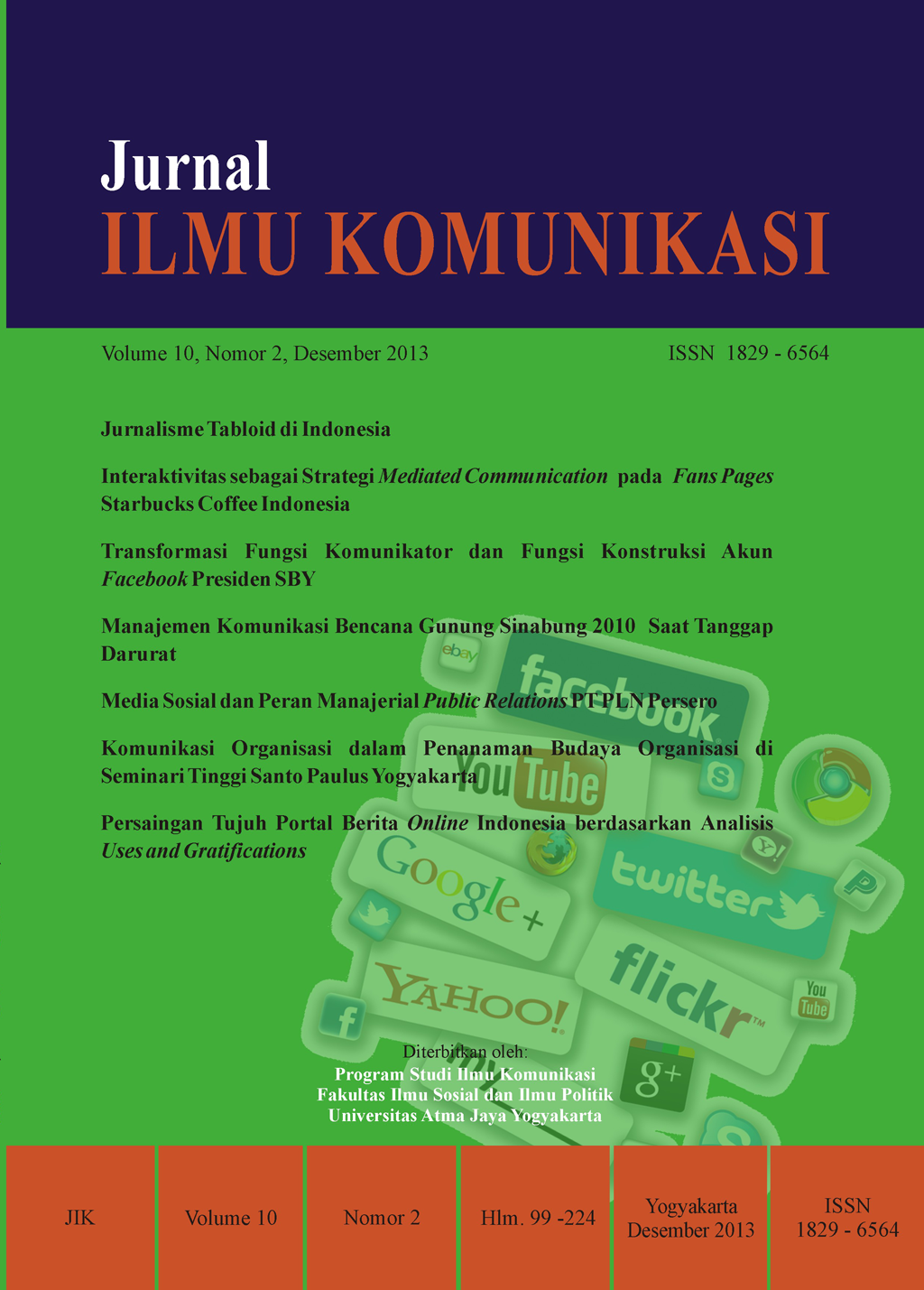Jurnalisme Tabloid di Indonesia
DOI:
https://doi.org/10.24002/jik.v10i2.347Abstract
Abstract: Many scholars have criticised tabloid journalism because it often contains drama and sensationalism. However, tabloid journalism actually cater the taste of the readers who were ignored by mainstream newspapers. This article is based on a research analyse Pos Kota and Lampu Hijau, relying on content analysis of the papers’ editions in December 2011 and January 2012, as well as interviews with the editors and journalists. The analyses conclude that tabloid journalism in Indonesia is an urban phenomenon focuses on local issues and targets urban workers as their core readers and has been most successful in Jakarta and its surrounds.
Abstrak: Jurnalisme tabloid merupakan terminologi yang sering diperdebatkan, dikritisi dan dicaci. Padahal, bentuk jurnalisme ini sebenarnya melayani selera pembaca yang cenderung diabaikan oleh jurnalisme arus utama. Artikel ini dibuat berdasarkan penelitian atas isi Pos Kota dan Lampu Hijau periode Desember 2011-Januari 2012, serta wawancara dengan editor dan jurnalis. Hasil analisis menunjukkan bahwa jurnalisme tabloid di Indonesia adalah jurnalisme yang fokus pada isu-isu lokal dan menyasar para pekerja urban sebagai pembaca utamanya sehingga meraih sukses di kota-kota besar terutama Jakarta dan sekitarnya.
Downloads
Published
How to Cite
Issue
Section
License
Jurnal ILMU KOMUNIKASI is an academic journal. As such, it is dedicated to the open exchange of information. For this reason, JIK is freely available to individuals and institutions. Authors who publish in Jurnal ILMU KOMUNIKASI will release their articles under the Creative Commons Attribution (BY) License. This license allows anyone to copy and redistribute the article in any medium or format as well as remix, transform, and build upon the material for any purpose, even commercially as long as they credit the authors for the original creation. For details of the rights authors grants users of their work, see the "human-readable summary" of the license, with a link to the full license. (Note that "you" refers to a user, not an author, in the summary)
 This work is licensed under a Creative Commons Attribution 4.0 International License.
This work is licensed under a Creative Commons Attribution 4.0 International License.














